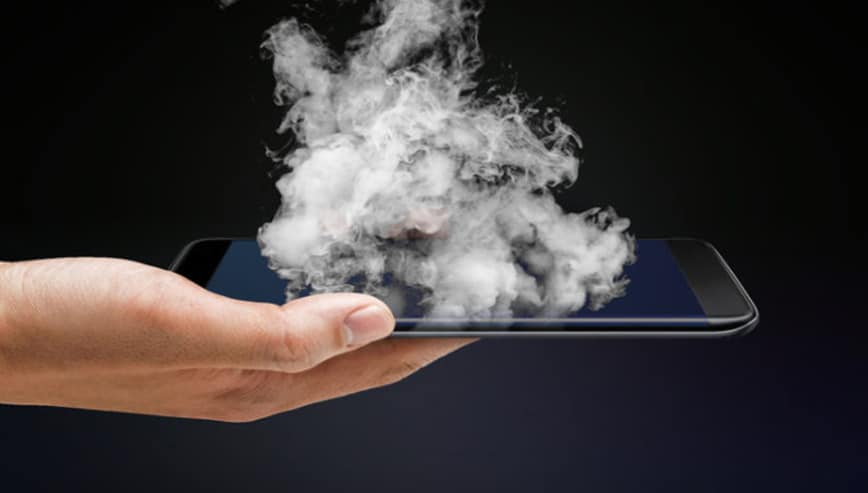Solving Common Smartphone Problems: Troubleshooting and DIY Repairs
When your cellphone starts malfunctioning, it can be one of the most dreadful experiences. In 2023, the cost of an average smartphone exceeded $800, making it quite pricey to replace. Even minor repairs can leave you spending a significant amount. So, is there anything you can do on your own?

Fortunately, the answer is yes. By employing troubleshooting techniques and quick-fix hacks, you can restore your device’s functionality effortlessly. Let’s explore prevalent smartphone problems that can be easily resolved through DIY repairs.
Common problem and troubleshooting with smartphone:
- Liquid Damage: Phones often suffer from liquid damage, which is a common issue. While many people are familiar with the “rice trick”, it is not always effective. Another method involves using a hairdryer to gently apply heat to the phone at a temperature below 166 degrees Fahrenheit. Another popular technique to dry a phone involves using salt, as it helps draw out moisture. However, we do not recommend this method due to the potential for corrosion. The most effective do-it-yourself approach described above is to apply controlled heat to the phone.
- Works slowly: In most cases, this is not a physical failure, but a software one. This suggests the conclusion that solving smartphone problems must also be software. First, you should try cleaning your smartphone using a phone cleaner. A specialized CleanUp cleaner app can remove duplicate photos, and temporary data and compress videos. You can click here for more about the app’s features. Specifically, the cleaner app helps by freeing up space and allowing the smartphone to work faster. It is also wise to try other methods: close background processes, disable unnecessary features, get rid of non-essential applications, etc.
- Cracked Screen: Seeing a cracked screen when you drop your phone face down can be a frustrating experience. Despite your efforts to keep it in great condition, gravity sometimes works against you. The broken screen goes beyond being annoying; it can even pose a risk of harm. There are a few things you can do at home to manage a cracked screen. A simple solution is to cut a piece of clear packing tape and place it over the screen. This will prevent the glass from causing any harm and prevent further shifting of glass fragments. Additionally, with the right tools and the help of online tutorials, you may be able to replace the screen yourself. Unfortunately, the best course of action is to take it to the store where you purchased it. If your phone is still under warranty, the store should be able to replace the screen so you can go back to browsing social media and responding to texts. Another option is to trade it in and use the money for an upgrade.
- Signal Problem: We often attribute signal problems to the service provider, but the issue may lie with the device itself. Dust tends to accumulate around the signal receivers, leading to signal reception problems. Another potential cause is app overload. To resolve the problem, simply wipe away the accumulated dust using a soft cloth. Additionally, removing unnecessary apps from the device can enhance signal efficiency and overall mobile speed.
- Overheating: Your cellphone may frequently experience an issue with overheating. This problem can stem from various factors, each of which has the potential to strain the device excessively. For example, you might encounter overheating if you use your smartphone for an extended period while driving in a hot car with navigation enabled, prompting your phone to shut down as a protective measure. Another possible cause could be the presence of malware within a downloaded app or document. Prolonged overheating or excessive heat can damage the battery or the internal chips responsible for the device’s functioning.
Overheating Issue Furthermore, it can weaken the adhesive keeping the phone intact, increasing the risk of water or dirt infiltration. To mitigate current and future overheating, you can try a few simple adjustments. If your phone is overheating due to extensive use, allow it to rest and refrain from charging it, as charging can generate additional heat. Placing your phone in a cooler location away from direct sunlight can also aid in cooling it down. However, avoid the temptation to cool it rapidly by placing it in the freezer or refrigerator, as this can be equally damaging as overheating. If you suspect the phone case is contributing to the issue, remove it to allow for better airflow and ventilation. Implementing preventive measures like using antivirus or junk-cleaning software can assist in maintaining a safe temperature, particularly if the cause of overheating is more sinister.
Conclusion:
Not all smartphone problems can be fixed on your own, but you have a good chance of solving less serious problems and glitches. To put it simply, you can fix software problems, as well as things that do not require disassembling the device. When we are talking about a sunken phone that was not properly dried or tried to start immediately, then all that is needed is repair. Moreover, it may not even be repairable. For this reason, it is important to know how to behave in emergencies.
